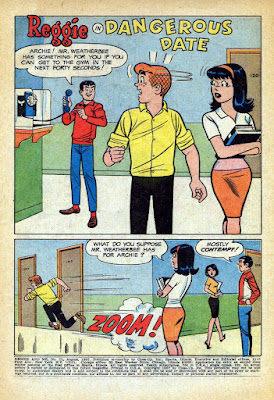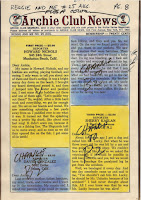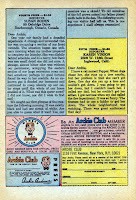There are a handful of covers published over the years that have become famous for innuendo or highly suggestive text (the most famous being Betty and Me #16 where Archie said he had to "beat off" three other guys).
First of all, even though these are often reference as having a "Controversial Cover," I must wonder if that is the correct label for these. Perhaps "Innuendo Cover" would be better.?
Here's a few of the KEY COMICS:
Archie #271 (June 1978)
Major Key: Controversial "Pearl Necklace" Cover
Even a low-grade copy of this book goes for $50-$70, and high grades go for more.
This is probably the second-most infamous cover from Archie comics (the first being the above-mentioned Betty and Me #16).
Link: https://www.comics.org/issue/105852/
Archie #511 (Aug 2001)
Major Key" Controversial "In the pink" cover
Probably the 3rd most-famous innuendo cover.
Link: https://www.comics.org/issue/238442/
Archie Comics #48 (Jan-Feb 1951)
Minor Key: Controversial Cover
"Betty do you wanna spoon?"
Link: https://www.comics.org/issue/8645/
Archie Comics #55 (March-April 1952)
Minor Key: Controversial Cover
Mr. Lodge asks an innuendo question: "Did Archie get there yet?"
Link: https://www.comics.org/issue/105636/
Archie Comics #78 (Jan-Feb 1956)
Minor Key: Controversial Cover
Archie is talking to betty and says he wants to "feel the clutch."
Not as famous as the others, but it still gets higher prices than surrounding issues.
Link: https://www.comics.org/issue/105659/
Archie... Archie Andrews Where Are You? Comics Digest Magazine #111 (Sept 1997)
Minor Key: Controversial Cover
Betty tells Archie to "Watch out for a big hole around here."
Link: https://www.comics.org/issue/293921/
Betty #8 (Sept1993)
Major Key: Famous Bikini Cover
Not as famous as some of the other covers, but this one brings a premium price in the hundreds of dollars.
Link: https://www.comics.org/issue/213444/
Betty and Me #37 (Sept 1971)
Minor Key: Controversial Cover
Betty says, "Yes, Archie -- You're rubbing me the right way."
Link: https://www.comics.org/issue/221897/
Betty and Me #40 (Feb 1971)
Major Key: Controversial Story
In this issue, Archie and Betty fall in a lake and are forced to rent a cabin together; they are soaking wet so Archie orders Betty to "Take your clothes off!" They spend the night innocently wrapped in towels, but their parents are naturally furious. FAMOUS story and has only been reprinted once.
Link: https://www.comics.org/issue/221900/
Betty and Me #136 (Nov 1983)
Minor Key: Controversial Cover
Has some notoriety because Betty is in her underwear standing on scale. Some readers were ticked off because it was body shaming her, others thought it was risque for showing her in her underwear on the cover.
Link: https://www.comics.org/issue/221996/
Everything's Archie #22 (Oct 1972)
Minor Key: Controversial Cover
Joke about "swinging."
Link: https://www.comics.org/issue/221897/
There are more, but I'll submit them at another time.


























